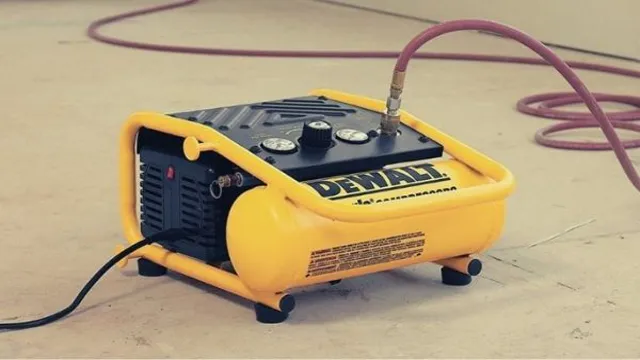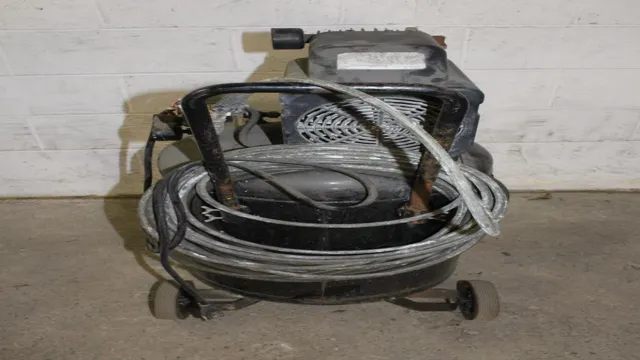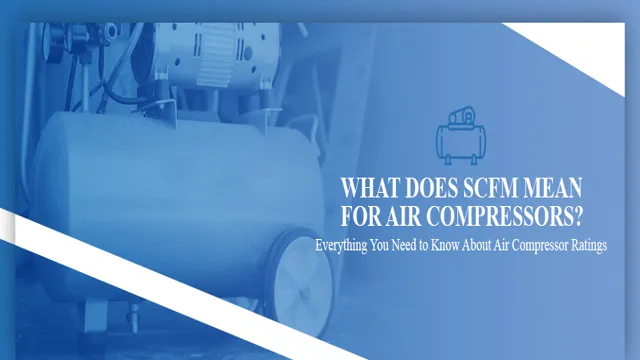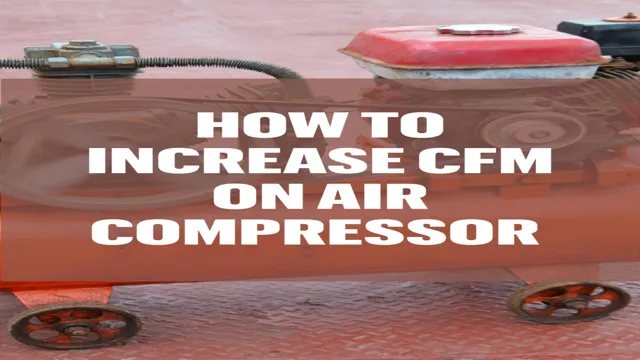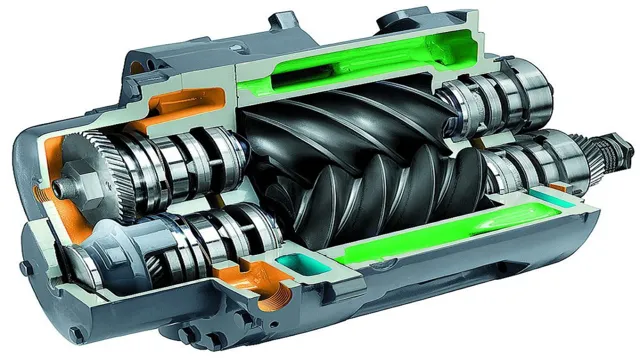How to Check Oil in Air Compressor: A Step-by-Step Guide for Beginners

When it comes to properly maintaining your air compressor, checking the oil should be at the top of your list. After all, neglecting this vital task can lead to decreased performance and even serious damage to your machine. But don’t worry, checking the oil is a simple process that anyone can do with the right knowledge and tools.
It’s kind of like checking the oil in your car – you want to make sure everything is running smoothly and avoid any potential breakdowns. So let’s dive into the world of checking oil in an air compressor and make sure your machine is running at its best.
Importance of Checking Oil Levels
If you’re wondering how to check oil in an air compressor, it’s important to remember the significance of checking oil levels regularly. Like any other mechanical equipment, an air compressor needs proper lubrication to operate efficiently and avoid unscheduled downtime due to overheating or mechanical failure. By checking the oil levels at regular intervals, you can keep track of the condition of your compressor’s lubrication system and make sure that the oil level is up to the mark.
If the oil level is too low, it can lead to serious damage to the compressor’s components, and if the oil has become contaminated or dirty, it won’t be able to provide adequate lubrication. Overall, by regularly checking the oil levels in your air compressor, you not only prevent major repairs but also extend the life of your equipment.
Avoiding Equipment Damage
Checking oil levels is crucial in avoiding equipment damage. It might seem like a small task, but neglecting to check the oil level in your equipment can cause significant damage and unnecessary expenses. Without proper oil levels, excessive heat can build up in the engine, leading to malfunctions and even complete failure.
You don’t want to be the person that has to explain to their boss why the equipment is fried, all due to not checking oil levels. Regular oil level checks can help prevent these headaches and keep your equipment running smoothly. It’s like taking care of your car; you wouldn’t drive it without checking the oil level, so why do that with your equipment? So, the next time you’re about to fire up the engine, take a moment to check the oil level.
Your equipment will thank you for it, and your wallet will too.

Ensuring Optimal Performance
The importance of checking oil levels cannot be overstated when it comes to ensuring optimal performance of your vehicle. Oil is a vital component of your car’s engine, helping to reduce friction and heat, while also serving as a lubricant to prevent wear and tear on critical components. Without enough oil, your engine can suffer irreparable damage and ultimately fail altogether.
It’s crucial to check your oil regularly, especially before long trips or during extreme weather conditions, to ensure that your vehicle has enough of the precious liquid to run smoothly. Think of oil as the lifeblood of your engine, and neglecting to check it regularly can be a costly mistake. Remember to use the dipstick to check the levels, and if you do need to top it up, use a high-quality oil that is recommended for your vehicle.
With proper care, your car will run smoothly for years to come.
Steps for Checking Oil Levels in an Air Compressor
Oil is essential for an air compressor to run efficiently, and as such, it’s important to regularly check the oil levels to avoid damage to the compressor. To check the oil levels in your air compressor, first, locate the oil reservoir. It’s usually found near the bottom of the compressor.
Once you’ve found the reservoir, remove the oil cap and check the oil level. The oil should be at the level marked on the reservoir. If the oil is lower, add enough oil to bring it back to the recommended level.
It’s important not to overfill the reservoir as this can cause damage to the air compressor. Be sure to also check the oil quality and replace it if it appears dirty or contaminated. So, if you want your air compressor to last longer and run efficiently, make it a regular practice to check the oil levels.
Step 1: Turn Off the Air Compressor
If you’re wondering how to check the oil levels in your air compressor, don’t worry – it’s actually quite simple. The first step is to turn off the air compressor completely. This is essential for your safety and also ensures that the oil settles at the bottom of the reservoir.
Once the compressor has cooled down sufficiently, you can then remove the oil cap and check the oil level with a dipstick. If the oil level is below the minimum mark, you’ll need to add more oil to ensure proper lubrication and ensure the longevity of your compressor. Checking your compressor’s oil levels should be done regularly to keep it running smoothly and efficiently.
Keeping up with basic maintenance like this can help prevent costly repairs and extend the life of your air compressor.
Step 2: Locate the Oil Fill Plug
When it comes to checking the oil levels in your air compressor, it’s important to follow the proper steps to ensure accuracy and safety. The second step in this process is to locate the oil fill plug. This plug is typically located on the side or top of the compressor and is easily identifiable by its shape and size.
Before attempting to remove the plug, be sure to turn off the compressor and allow it to cool down for at least 10 minutes. Once the compressor is cooled, use a wrench or socket to carefully remove the oil fill plug, being mindful of any residual pressure. Check the oil level using a dipstick or sight glass and add more oil if necessary, being sure not to overfill.
With a little bit of attention and care, checking the oil levels in your air compressor can become a quick and easy routine that helps keep your compressor working smoothly and efficiently.
Step 3: Remove the Oil Fill Plug
When it comes to maintaining an air compressor, checking the oil levels is an essential task to keep it running smoothly. Once you have located the oil fill plug, the next step is to remove it. This is typically located near the base of the compressor and can be unscrewed with a wrench or socket set.
Depending on the model, the oil fill plug may require a specific type of tool, so be sure to consult the manual or manufacturer’s instructions to avoid damaging the plug. Once you have removed the plug, use a dipstick or sight glass to check the oil level. The oil level should be between the minimum and maximum marks on the dipstick or sight glass.
If it is too low, add more oil as needed, but be careful not to overfill it. By taking the time to check and maintain oil levels in your air compressor, you can be sure it will run efficiently and last for a long time. Don’t forget to replace the oil fill plug and clean up any spills before using your compressor again.
Step 4: Inspect and Replenish Oil Levels
To keep your air compressor running smoothly, it’s important to regularly check and replenish the oil levels. Checking oil levels in an air compressor is a straightforward process that shouldn’t take more than a few minutes. First, ensure that your compressor is turned off and has had ample time to cool down.
Next, locate the oil sight glass or dipstick on the compressor’s pump. The sight glass should be clear, while the dipstick should have clearly marked high and low oil levels. Use the dipstick or sight glass to determine whether your oil levels are within the suitable range.
If the levels are low, add oil until they reach the appropriate level. It’s important to use the type and weight of oil recommended by the manufacturer to avoid damage to your compressor. Remember to check your oil levels regularly to avoid running your compressor with low oil levels, which can cause significant damage over time.
Step 5: Replace the Oil Fill Plug
After you have checked the oil levels in your air compressor, it’s time to replace the oil fill plug, which is an essential step to keep your compressor in good condition. Begin by cleaning the plug threads and oil fill opening to avoid contamination. Next, insert the plug and tighten it by hand.
You can then finish tightening it using a wrench, but be sure not to over-tighten it, as this can damage the threads. Remember to wipe away any excess oil on the plug and surrounding areas to prevent dirt buildup. By following these simple steps, you can ensure that your air compressor runs smoothly, and you won’t have to worry about any oil leakage or contamination issues.
Just remember, proper maintenance is crucial for ensuring the longevity of your air compressor.
Maintenance Tips for Air Compressor Oil
If you’re wondering how to check oil in your air compressor, it’s actually a pretty simple process. First, turn off the compressor and unplug it from the power source. Locate the oil sight glass on the side of the compressor tank.
It should be a small window with markings indicating the proper oil level. If the oil level is below the markings, it’s time to add more oil. Use a funnel to add oil slowly to avoid spills and overfilling.
Be sure to use the type of oil specified in your compressor’s manual, as using the wrong type can damage your machine. Regularly checking and maintaining your compressor’s oil level is important to ensure optimal performance and prevent costly repairs down the line. By following these simple steps, you can ensure that your compressor is always well-oiled and ready for any task at hand.
Frequent Oil Changes
Frequent Oil Changes As with any machine that requires lubrication, air compressors need their oil changed at regular intervals to keep them running smoothly. Not only does fresh oil help to reduce friction and wear on the internal components, but it also prevents contamination that can lead to damage and premature failure. When it comes to air compressor maintenance, changing the oil is one of the simplest and most important tasks you can perform.
The frequency of oil changes will depend on the usage and operating conditions of your compressor, but a good rule of thumb is to change it every 500 hours of use or six months, whichever comes first. By staying on top of your compressor’s oil changes, you can ensure that it operates for years to come with minimal downtime and repair costs.
Use Recommended Oil Type
One of the most critical aspects of maintaining your air compressor’s performance is by using the recommended oil type. Air compressors come in different designs and purposes, and each requires a specific oil type. Using the wrong type of oil can lead to equipment damage and reduced efficiency.
Consult your air compressor’s manual for the manufacturer’s recommended oil specifications. The oil type depends on factors such as compressor size, operating temperature, and ambient temperature. For instance, synthetic oils are best for smaller compressors that operate at high temperatures.
On the other hand, mineral oils are ideal for larger compressors used in low-temperature environments. By using the recommended oil type, you can ensure that your compressor operates at optimal performance, reduces wear and tear on its components, and extends its lifespan. So, before you perform any oil changes, ensure that you have the right type of oil to keep your air compressor in top shape.
Check for Oil Leaks
Air Compressor Oil Maintaining your air compressor is essential for longevity and efficiency, and checking for oil leaks is crucial to ensure it runs smoothly. Over time, wear and tear can cause gaskets and seals to leak oil, leading to reduced performance and potential damage to the compressor. Regularly inspecting for oil leaks and promptly repairing them can save you headaches and money in the long run.
It’s also important to choose the right oil for your compressor; using the wrong type can cause premature wear and damage. Always refer to your compressor’s manual or consult a professional for guidance on what oil to use. Maintaining your air compressor oil will not only prolong the life of your compressor but also ensure it runs efficiently, saving you money on energy costs.
Stay on top of your maintenance and enjoy a well-running air compressor for years to come.
Conclusion
Checking the oil in your air compressor may seem like a tedious task, but it is imperative for its longevity and performance. Avoid being left in a sticky situation by ensuring that your compressor’s oil level is maintained at an optimum level. In short, remember to oil it up, check it often, and keep your compressor running like a well-oiled machine.
Trust us, your compressed air will thank you for it!”
FAQs
What is the importance of checking oil in an air compressor?
Checking oil levels in an air compressor is important as it ensures smooth functioning of the machine. Proper oil levels help in cooling the compressor and lubricating its moving parts.
How often should I check the oil in my air compressor?
It is recommended to check the oil levels in your air compressor at least once a month or before every use. However, if the compressor is extensively used on a daily basis, it is best to check oil levels more frequently.
What type of oil should I use for my air compressor?
The type of oil to be used in an air compressor depends on the make and model. Always check the manufacturer’s recommendations in the user manual. Generally, synthetic oils are preferred over mineral oils as they have better lubrication properties and last longer.
How do I check the oil level in my air compressor?
To check the oil level, turn off the compressor and wait for it to cool down. Remove the oil fill cap and wipe the dipstick. Insert the dipstick without screwing it in and check the oil level against the markings on the dipstick.
What should I do if the oil level in my air compressor is low?
If the oil level is low, fill it up to the recommended level as per the user manual. Use the recommended type of oil and take care not to overfill it as it can cause damage to the compressor.
Can I use any type of oil in my air compressor?
It is not recommended to use any type of oil in an air compressor. Always use the recommended type of oil as per the user manual as it is designed to work best with the specific compressor.
Why is it dangerous to run an air compressor without oil?
Running an air compressor without oil can cause friction and wear and tear in the moving parts of the machine. This can cause it to overheat or break down, leading to potential damage and safety hazards.



